Some days with Nexus 4
For the first time in the history of the Nexus brand, Google managed to make a smartphone that they dared from the shelves for the first day of sales. It seems that the Internet giant has finally cut the chip: you need to make a powerful beautiful smartphone with unique chips and sell it cheaply. Eight-gigabyte Nexus 4 in the States costs 299 bucks, and the version with sixteen gigabytes on board is sold there for $ 349. What price will be in Russia is difficult to say now, but IMHO, as soon as LG copes with the increased giant demand, and the new gadget batches will go on sale again, the Nexus will attract attention from us.

')
The smartphone, which this time LG did for Google, is not like anything Koreans have ever done. However, the previous Nexus, which was produced by Samsung, was also not part of the model range. Obviously, Google is always responsible for the design in these projects, and continuity is immediately visible between the two last smartphones of the Internet giant. The hull lines are very similar, and if you look at the device from the front, they can be confused.
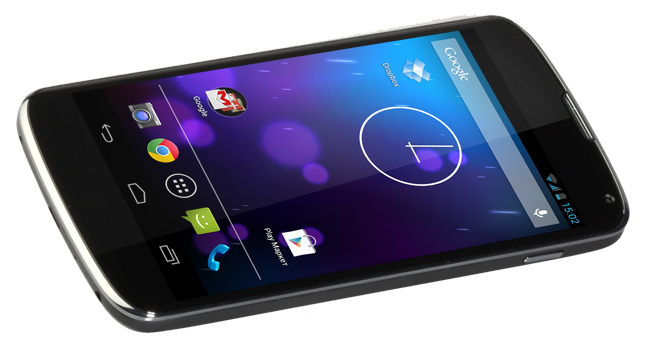
But with all this similarity there are a lot of differences. The back cover, for example, no longer has a bend and a tangible texture. Instead, there is now a gloss (according to my feelings - it is plastic, but foreign colleagues have empirically found out that it’s still glass that breaks) and pixels glowing in the light - an obvious reference to one of the living themes of the desktop, which was installed by default on the Nexus One.

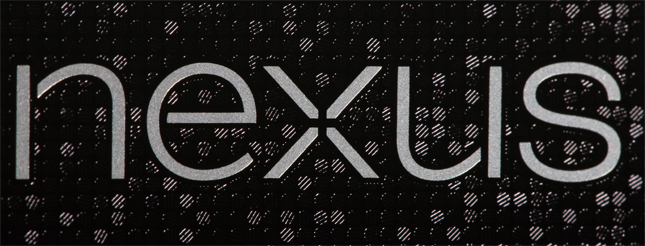
This is how these pixels look like
The elements on the ends are familiar. On the right - the power button, lock, below - micro USB port and microphone, on top - audio jack and a second microphone for noise cancellation, and on the left side of the volume control and suddenly (!) Slot for micro SIM cards.
The design of this slot is similar to that found in the iPhone, the new Nokia and, for example, HTC. To pull out the SIM, you need a special clip that comes in the kit. And it is better not to try ordinary stationery - the hole in the plastic sidewall is much narrower. Well and, accordingly, the back cover is no longer removed, and the battery, of course, too.
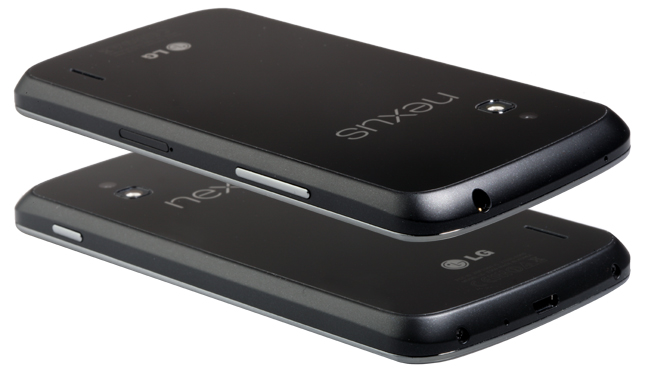
In general, the new gadget fits well in the hand, but the previous model, in which the case narrowed closer to the top and the cover of the battery pack was textured, felt somehow safer. Purely psychologically, it seems that the Nexus 4 shining on all sides is more fragile, and if something happens, then he will immediately be handed.
New smart Google equipped with a screen diagonal of 4.7 inches with a resolution of 1280 x 768 pixels. That is, it is 320 dpi. And this is not AMOLED ... But IPS! He also has no problems with picture quality and viewing angles. The only thing AMOLED would possibly consume is less energy, but it would increase the total cost of the gadget.
From above, the matrix is covered with Gorilla Glass 2 glass, and it must be admitted that in an incomplete week in the pockets with keys and other stuff the surface was not scratched. The screen is as good as new! I even specially tried to scratch him with a coin - nothing came of it. Naturally, if you want to scratch it, you can, say, a fine sand, but this goal did not stand.
The hardware stuffing, as I said, is powerful here. The gadget is built on the Qualcomm Snapdragon S4 Pro platform. This includes a processor with four Krait cores and a frequency of 1.5 GHz, graphics Adreno 320 and two gigabytes of RAM! The main memory can be eight or sixteen gigabytes, and, unfortunately, it cannot be expanded. In the Quadrant Standart synthetic test, the Nexus 4 configuration with its own turns out to be in the first place, then immediately after the HTC One X that was in the lead until recently.

The main photo module in Nexus 4 has a resolution of eight megapixels and makes very good pictures, and can also record video in Full HD format.
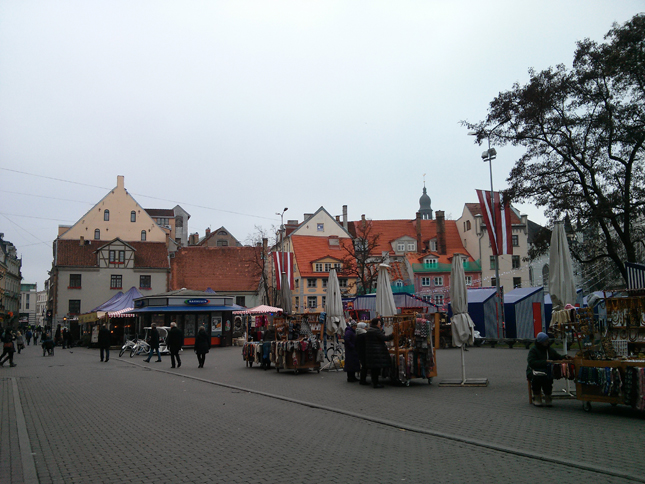

The interface has changed a lot, and now everything is basically built on the principle of sectors in a circle.
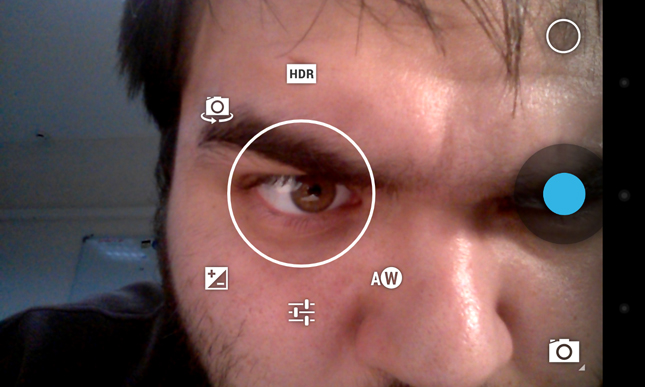
Front camera settings (1.3 megapixels)
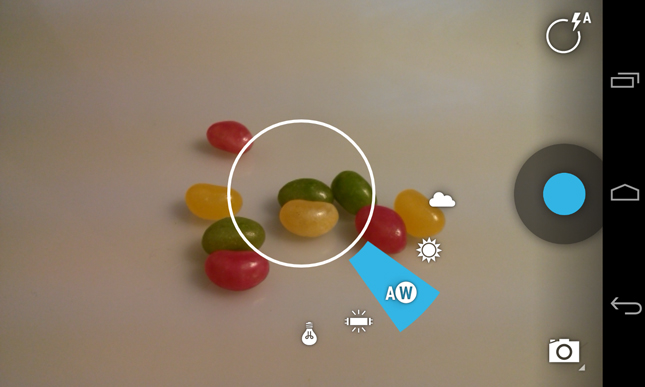
White balance on the main camera
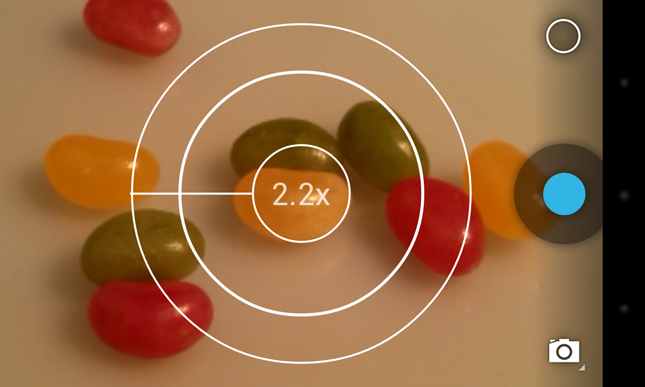
But the main thing is the appearance of the photosphere, with the help of which you can shoot 3D panoramas like street view in Google Maps. Despite the fact that seams are often seen inside such a sphere, inconsistencies in the brightness of different fragments, etc., this function is still very, very impressive. Another would be Google to finish the bug with the inability to remove the lower and upper points of the sphere, and it would be great in general!

With those who still do not have a device running Android 4.2, this panorama can not be instantly shared, but they still left a loophole. Google has opened a special page where such photospheres can be sent, and after appruv they will appear on Maps based on the coordinates recorded in the file when shooting. So far, only one of the three sent out panoramas has been approved, but nevertheless the service works.
Since the iframe is not supported in the Habr editor, just keep the link to the live photosphere near the St. Peter's church in Riga.
Another feature of the camera is time-lapse shooting (aka timelaps). It is available from the video recording menu, and before you press the red button, you just need to set the interval at which frames will be taken. And no more problems, after the shooting is completed, there will be no: the smartphone immediately saves the resulting video sequence in the usual format mp4.
And now about the chips. They are mostly software, but they are not less steep. The smartphone runs on Android 4.2 and is still called Jelly Bean. Then there were widgets for the lock screen, a new notification panel and a new standby mode Daydream.
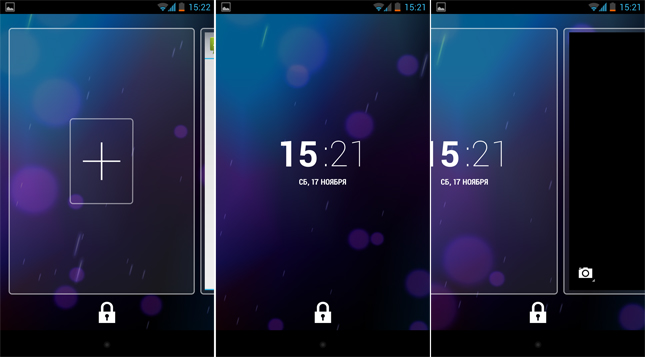
In addition, Google states that the system has become even faster than 4.1, to which there were no issues in this context anyway. But there is no reason not to believe the developers - everything really just flies!
The third killer feature is wireless charging. The Nexus 4 has a standard micro-USB, but it will be much more convenient to use the Orb charger in the form of a hemisphere, on which the smartphone is placed at an angle. Unfortunately, the gadget came to us completely naked, so just hold a photo.
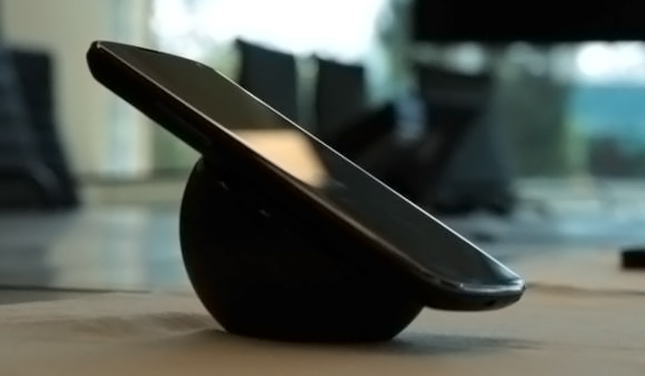
Wireless charging works according to the Qi standard, and this means that the Nexus can be put on other similar sites. For example, the smart feels quite comfortable on a wireless Nokia charger.
And yes, it would be great if such an accessory came as standard, but unfortunately Orba will have to be purchased separately. Unfortunately, there is no information about the price and delivery time.
As for the battery itself, it is lithium-polymer and has a capacity of 2100 mAh. My smartphone in hard mode spent no more than 12 hours. That is, the increase in battery capacity has gone on to leave the battery life at the same level relative to the previous Nexus, whose iron is weaker. It is a pity that the increase did not happen, but you can already live with half a day.
Many people didn’t like that LG took the production of Nexus 4, but I would say that this is the best that this Korean company did. And what's more, this is probably the best Nexus ever. Both hardware and software smartphone at the height, so even at a very reasonable price. I think this is the moment when Apple should start to be afraid.
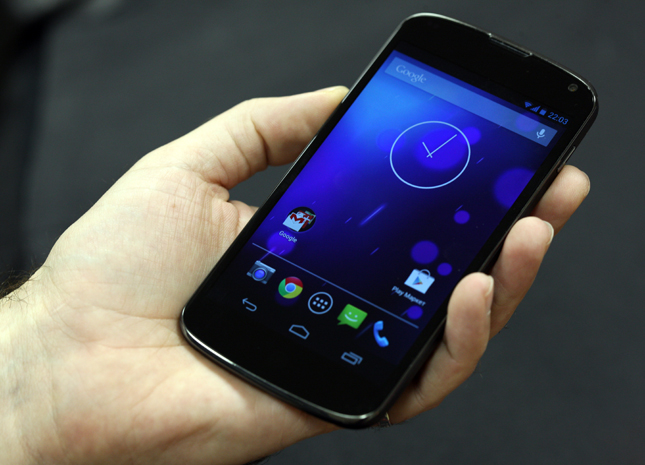
OS: Android 4.2 Jelly Bean
Processor: 4 Krait cores, 1.5 GHz
Video: Adreno 320
RAM: 2 GB
Main memory: 8-16 GB, no microSD slot
Screen: 4.7 ", TFT IPS, 768 x 1280
Communications: Wi-Fi (a / b / g / n), Bluetooth 4.0, NFC, USB 2.0
Connectors: USB (USB Host), 3.5mm audio jack
Camera: 8 megapixels. + 1.3 megapixels.
Navigation: GPS, GPS, GLONASS
Battery: 2100 mAh
Dimensions: 133.9 x 68.7 x 9.1 mm
Weight: 139 grams
Price: $ 299 for 8 GB and $ 349 for 16 GB (in the US without a contract)
Design

')
The smartphone, which this time LG did for Google, is not like anything Koreans have ever done. However, the previous Nexus, which was produced by Samsung, was also not part of the model range. Obviously, Google is always responsible for the design in these projects, and continuity is immediately visible between the two last smartphones of the Internet giant. The hull lines are very similar, and if you look at the device from the front, they can be confused.

But with all this similarity there are a lot of differences. The back cover, for example, no longer has a bend and a tangible texture. Instead, there is now a gloss (according to my feelings - it is plastic, but foreign colleagues have empirically found out that it’s still glass that breaks) and pixels glowing in the light - an obvious reference to one of the living themes of the desktop, which was installed by default on the Nexus One.


This is how these pixels look like
The elements on the ends are familiar. On the right - the power button, lock, below - micro USB port and microphone, on top - audio jack and a second microphone for noise cancellation, and on the left side of the volume control and suddenly (!) Slot for micro SIM cards.
The design of this slot is similar to that found in the iPhone, the new Nokia and, for example, HTC. To pull out the SIM, you need a special clip that comes in the kit. And it is better not to try ordinary stationery - the hole in the plastic sidewall is much narrower. Well and, accordingly, the back cover is no longer removed, and the battery, of course, too.

In general, the new gadget fits well in the hand, but the previous model, in which the case narrowed closer to the top and the cover of the battery pack was textured, felt somehow safer. Purely psychologically, it seems that the Nexus 4 shining on all sides is more fragile, and if something happens, then he will immediately be handed.
Screen
New smart Google equipped with a screen diagonal of 4.7 inches with a resolution of 1280 x 768 pixels. That is, it is 320 dpi. And this is not AMOLED ... But IPS! He also has no problems with picture quality and viewing angles. The only thing AMOLED would possibly consume is less energy, but it would increase the total cost of the gadget.
From above, the matrix is covered with Gorilla Glass 2 glass, and it must be admitted that in an incomplete week in the pockets with keys and other stuff the surface was not scratched. The screen is as good as new! I even specially tried to scratch him with a coin - nothing came of it. Naturally, if you want to scratch it, you can, say, a fine sand, but this goal did not stand.
Iron
The hardware stuffing, as I said, is powerful here. The gadget is built on the Qualcomm Snapdragon S4 Pro platform. This includes a processor with four Krait cores and a frequency of 1.5 GHz, graphics Adreno 320 and two gigabytes of RAM! The main memory can be eight or sixteen gigabytes, and, unfortunately, it cannot be expanded. In the Quadrant Standart synthetic test, the Nexus 4 configuration with its own turns out to be in the first place, then immediately after the HTC One X that was in the lead until recently.

Camera
The main photo module in Nexus 4 has a resolution of eight megapixels and makes very good pictures, and can also record video in Full HD format.


The interface has changed a lot, and now everything is basically built on the principle of sectors in a circle.

Front camera settings (1.3 megapixels)

White balance on the main camera

But the main thing is the appearance of the photosphere, with the help of which you can shoot 3D panoramas like street view in Google Maps. Despite the fact that seams are often seen inside such a sphere, inconsistencies in the brightness of different fragments, etc., this function is still very, very impressive. Another would be Google to finish the bug with the inability to remove the lower and upper points of the sphere, and it would be great in general!

With those who still do not have a device running Android 4.2, this panorama can not be instantly shared, but they still left a loophole. Google has opened a special page where such photospheres can be sent, and after appruv they will appear on Maps based on the coordinates recorded in the file when shooting. So far, only one of the three sent out panoramas has been approved, but nevertheless the service works.
Since the iframe is not supported in the Habr editor, just keep the link to the live photosphere near the St. Peter's church in Riga.
Another feature of the camera is time-lapse shooting (aka timelaps). It is available from the video recording menu, and before you press the red button, you just need to set the interval at which frames will be taken. And no more problems, after the shooting is completed, there will be no: the smartphone immediately saves the resulting video sequence in the usual format mp4.
Chips
And now about the chips. They are mostly software, but they are not less steep. The smartphone runs on Android 4.2 and is still called Jelly Bean. Then there were widgets for the lock screen, a new notification panel and a new standby mode Daydream.

In addition, Google states that the system has become even faster than 4.1, to which there were no issues in this context anyway. But there is no reason not to believe the developers - everything really just flies!
The third killer feature is wireless charging. The Nexus 4 has a standard micro-USB, but it will be much more convenient to use the Orb charger in the form of a hemisphere, on which the smartphone is placed at an angle. Unfortunately, the gadget came to us completely naked, so just hold a photo.

Wireless charging works according to the Qi standard, and this means that the Nexus can be put on other similar sites. For example, the smart feels quite comfortable on a wireless Nokia charger.
And yes, it would be great if such an accessory came as standard, but unfortunately Orba will have to be purchased separately. Unfortunately, there is no information about the price and delivery time.
Battery
As for the battery itself, it is lithium-polymer and has a capacity of 2100 mAh. My smartphone in hard mode spent no more than 12 hours. That is, the increase in battery capacity has gone on to leave the battery life at the same level relative to the previous Nexus, whose iron is weaker. It is a pity that the increase did not happen, but you can already live with half a day.
Summary
Many people didn’t like that LG took the production of Nexus 4, but I would say that this is the best that this Korean company did. And what's more, this is probably the best Nexus ever. Both hardware and software smartphone at the height, so even at a very reasonable price. I think this is the moment when Apple should start to be afraid.

Specs
OS: Android 4.2 Jelly Bean
Processor: 4 Krait cores, 1.5 GHz
Video: Adreno 320
RAM: 2 GB
Main memory: 8-16 GB, no microSD slot
Screen: 4.7 ", TFT IPS, 768 x 1280
Communications: Wi-Fi (a / b / g / n), Bluetooth 4.0, NFC, USB 2.0
Connectors: USB (USB Host), 3.5mm audio jack
Camera: 8 megapixels. + 1.3 megapixels.
Navigation: GPS, GPS, GLONASS
Battery: 2100 mAh
Dimensions: 133.9 x 68.7 x 9.1 mm
Weight: 139 grams
Price: $ 299 for 8 GB and $ 349 for 16 GB (in the US without a contract)
Source: https://habr.com/ru/post/160323/
All Articles